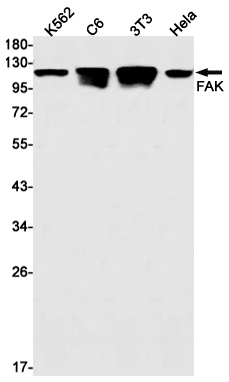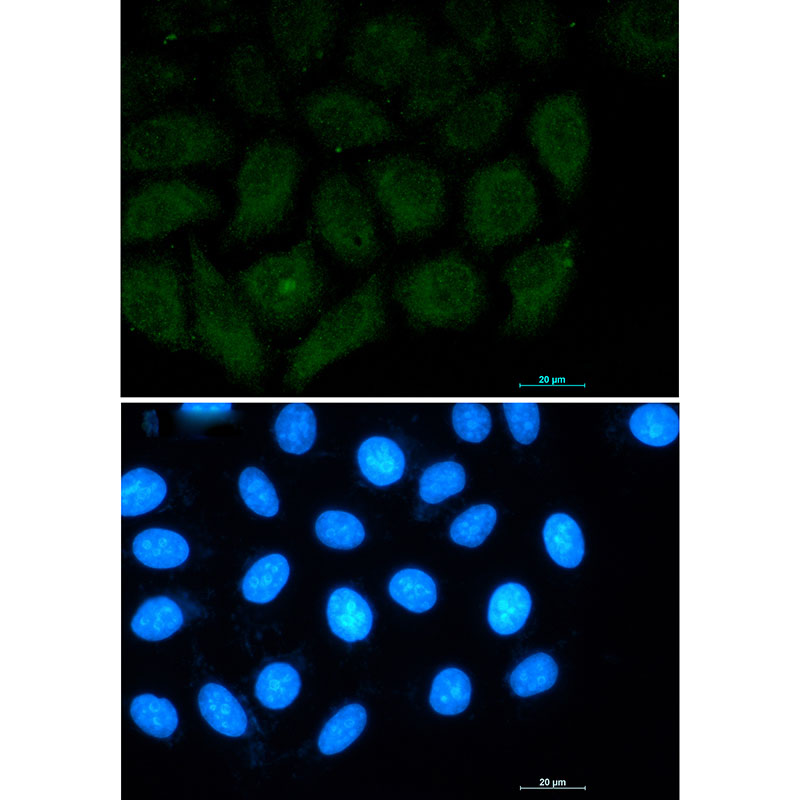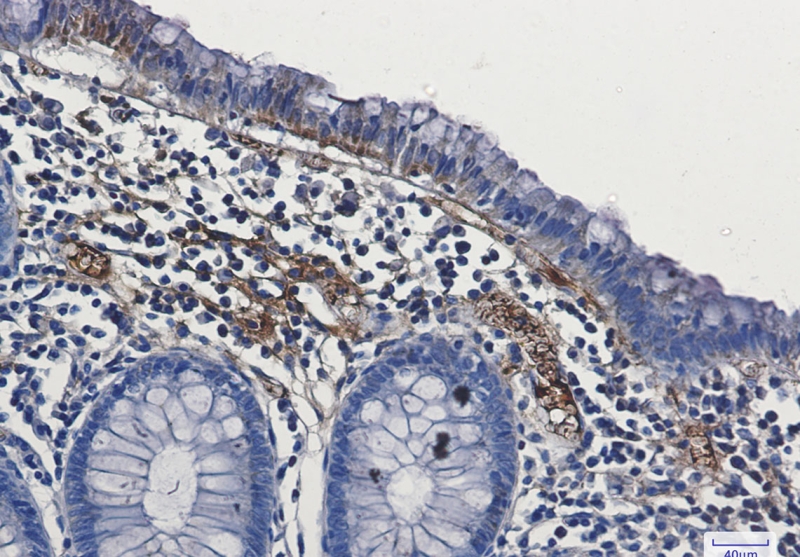


| WB | 咨询技术 | Human,Mouse,Rat |
| IF | 1/20 | Human,Mouse,Rat |
| IHC | 1/50-1/100 | Human,Mouse,Rat |
| ICC | 1/50-1/200 | Human,Mouse,Rat |
| FCM | 咨询技术 | Human,Mouse,Rat |
| Elisa | 咨询技术 | Human,Mouse,Rat |
| Aliases | PTK2; FAK; FAK1; Focal adhesion kinase 1; FADK 1; Focal adhesion kinase-related nonkinase; FRNK; Protein phosphatase 1 regulatory subunit 71; PPP1R71; Protein-tyrosine kinase 2; p125FAK; pp125FAK |
| Entrez GeneID | 5747 |
| WB Predicted band size | Calculated MW: 119 kDa; Observed MW: 125 kDa |
| Host/Isotype | Rabbit IgG |
| Antibody Type | Primary antibody |
| Storage | Store at 4°C short term. Aliquot and store at -20°C long term. Avoid freeze/thaw cycles. |
| Species Reactivity | Human,Mouse,Rat |
| Immunogen | A synthetic peptide of human FAK |
| Formulation | Purified antibody in TBS with 0.05% sodium azide,0.05%BSA and 50% glycerol. |
+ +
以下是3-4条关于FAK(Focal Adhesion Kinase)抗体的参考文献示例,包含文献名称、作者及摘要概括:
---
1. **文献名称**:*Focal adhesion kinase promotes cell migration via interaction with Src-family kinases*
**作者**:Schlaepfer, D.D., et al.
**摘要**:该研究通过免疫沉淀和Western blot技术,利用FAK特异性抗体验证了FAK与Src激酶的相互作用,揭示了其在调控细胞迁移中的关键机制,并证明抗体检测可有效分析FAK磷酸化位点(如Tyr397)。
---
2. **文献名称**:*Focal adhesion kinase: in command and control of cell motility*
**作者**:Mitra, S.K., & Schlaepfer, D.D.
**摘要**:这篇综述系统总结了FAK的结构、功能及其在肿瘤转移中的作用,重点讨论了多种FAK抗体在检测蛋白表达、活性(如磷酸化状态)及亚细胞定位中的应用(如免疫荧光和流式细胞术)。
---
3. **文献名称**:*Integrin-regulated FAK-Src signaling in normal and cancer cells*
**作者**:Frame, M.C., et al.
**摘要**:研究利用FAK抗体及磷酸化特异性抗体(如抗Tyr576/577),阐明了整合素介导的FAK-Src信号通路在肿瘤微环境中的调控机制,强调了抗体在区分FAK激活状态中的重要性。
---
4. **文献名称**:*FAK phosphorylation sites mapped by mass spectrometry*
**作者**:Zhao, J., et al.
**摘要**:通过质谱分析和FAK抗体验证,该研究鉴定了多个FAK磷酸化位点,并开发了针对这些位点的特异性抗体,为研究细胞黏附和迁移中的信号转导提供了工具。
---
**注**:以上文献为示例性质,实际引用时请核对数据库(如PubMed)获取完整信息及DOI编号。研究领域建议关注FAK在癌症、细胞力学或药物靶点中的抗体应用。
Focal adhesion kinase (FAK), encoded by the *PTK2* gene, is a non-receptor tyrosine kinase critical in regulating cell adhesion, migration, proliferation, and survival. It localizes to focal adhesions, dynamic structures linking the extracellular matrix to the cytoskeleton. FAK activation involves autophosphorylation at tyrosine residue 397 (Y397), which recruits Src-family kinases to propagate downstream signaling via pathways like PI3K/AKT and MAPK. Dysregulated FAK signaling is implicated in cancer progression, fibrosis, and cardiovascular diseases, making it a therapeutic target.
FAK antibodies are essential tools for studying its expression, activation, and interactions. They enable detection of total FAK levels or site-specific phosphorylation (e.g., Y397. Y861) using techniques like Western blotting, immunofluorescence, or immunohistochemistry. Monoclonal antibodies offer high specificity, while polyclonal antibodies may capture diverse epitopes. Some antibodies block FAK function, aiding mechanistic studies. Commercial FAK antibodies are validated across species and sample types, but variability in sensitivity and cross-reactivity requires careful optimization. Research applications span cancer biology (e.g., metastasis, drug resistance), developmental processes, and evaluating FAK inhibitors in preclinical models. These antibodies underpin both basic research and translational studies aiming to modulate FAK-associated pathologies.
×